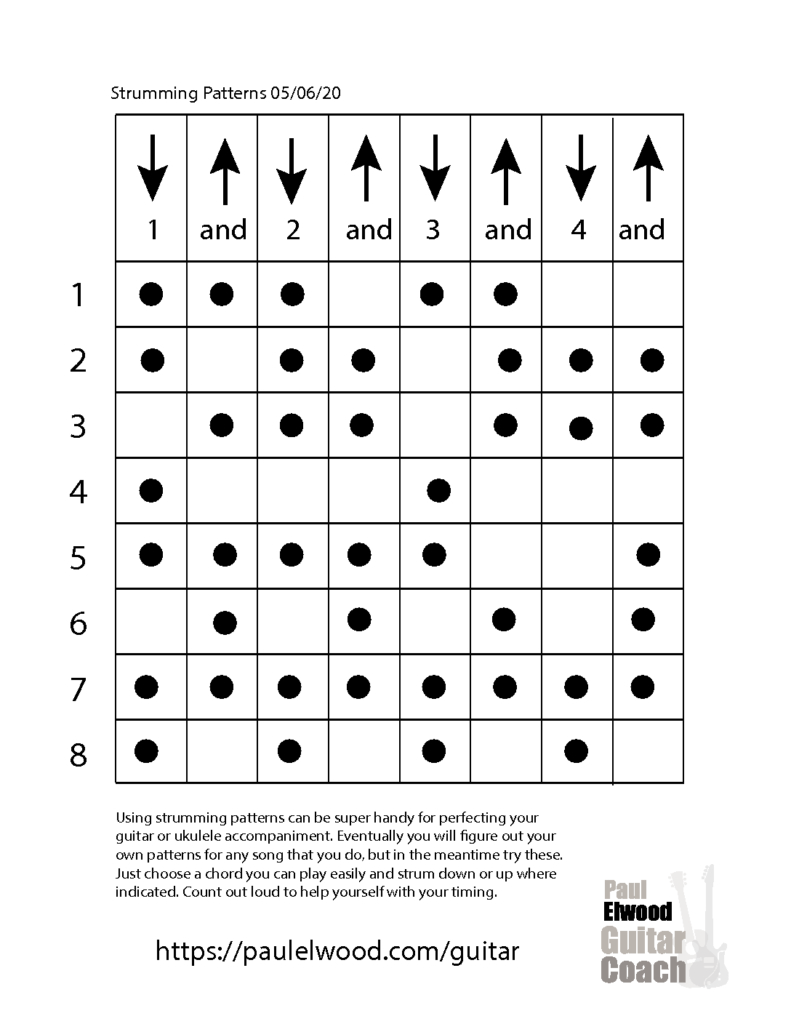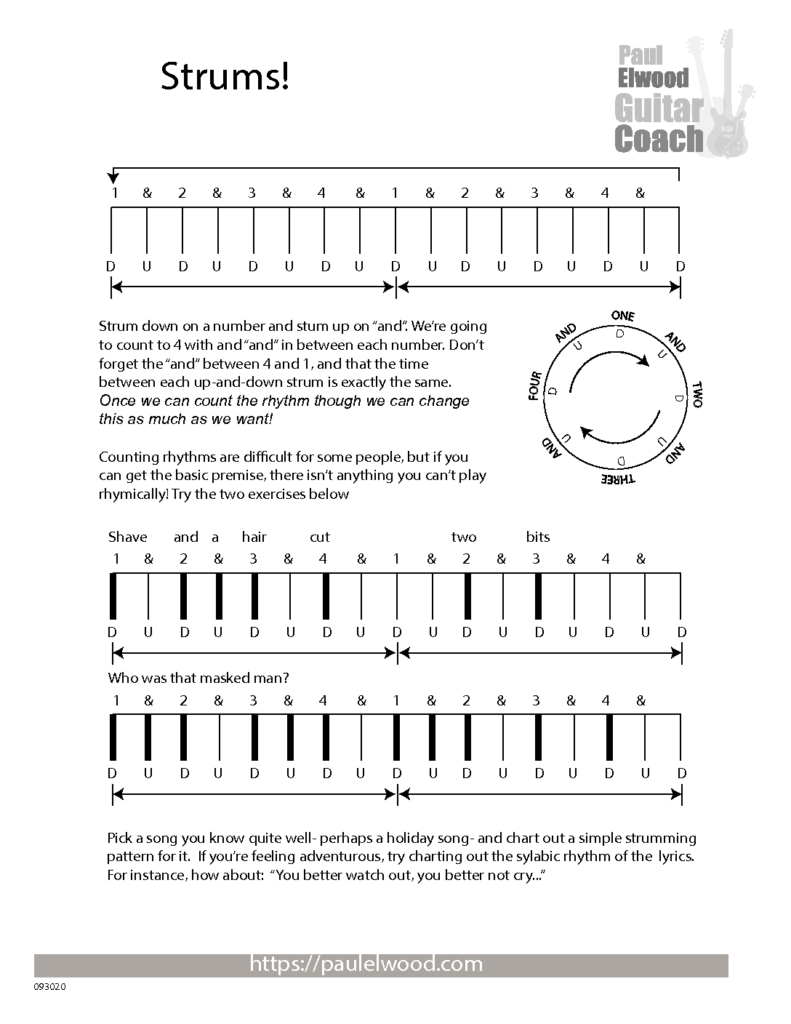Strumming guitar is one of the first skills most guitar players start with. No matter what stage we’re at with our playing though, we can all learn to strum more accurately… and more interestingly! Below are some resources you might find helpful. Take a look at the video and print out the two pdf files for your own use. Practice the strumming patterns slowly and once you see how this works, you can easily understand how to strum songs you hear. Or even better, you can make up your own strumming patterns!
Start with the simple concept of “down strums” and “up strums”. In 4/4 time there are four beats per measure, so to start, we only need to count to four over and over again. Practice counting without pausing between any of the numbers and especially between “4” and “1”. So we’ll count “one, two, three, four, one, two, three, four” etc. The thing to avoid is counting “one, two, three, four……. one, two, three, four”. So no pause between any numbers and especially not between four and one.
Next, hold any chord that’s comfortable for you and count while you strum down across the strings. Often we might start with a G chord in the first position, and don’t worry about the 1 string too much- this exercise is more about working the right-hand than precise chord shapes. With the pick or thumb above the 6 string, use a downward motion across the strings while you say the number. So each time you say a number, you’ll strum down across the strings at exactly the same time you say the number!
Now comes the interesting part. You can add the word “and” in between your numbers like this: “one AND two AND three AND four AND one AND two AND three AND four AND”. The “and” represents an up strum. Your pick will be below the 1 string after strumming down on a number so as you say the word “and” simply strum back up again to the starting position. That’s it! Practice this every chance you get- it is the fundamental building block for strumming guitar.
More free lessons and video at patreon.com/guitarcat



